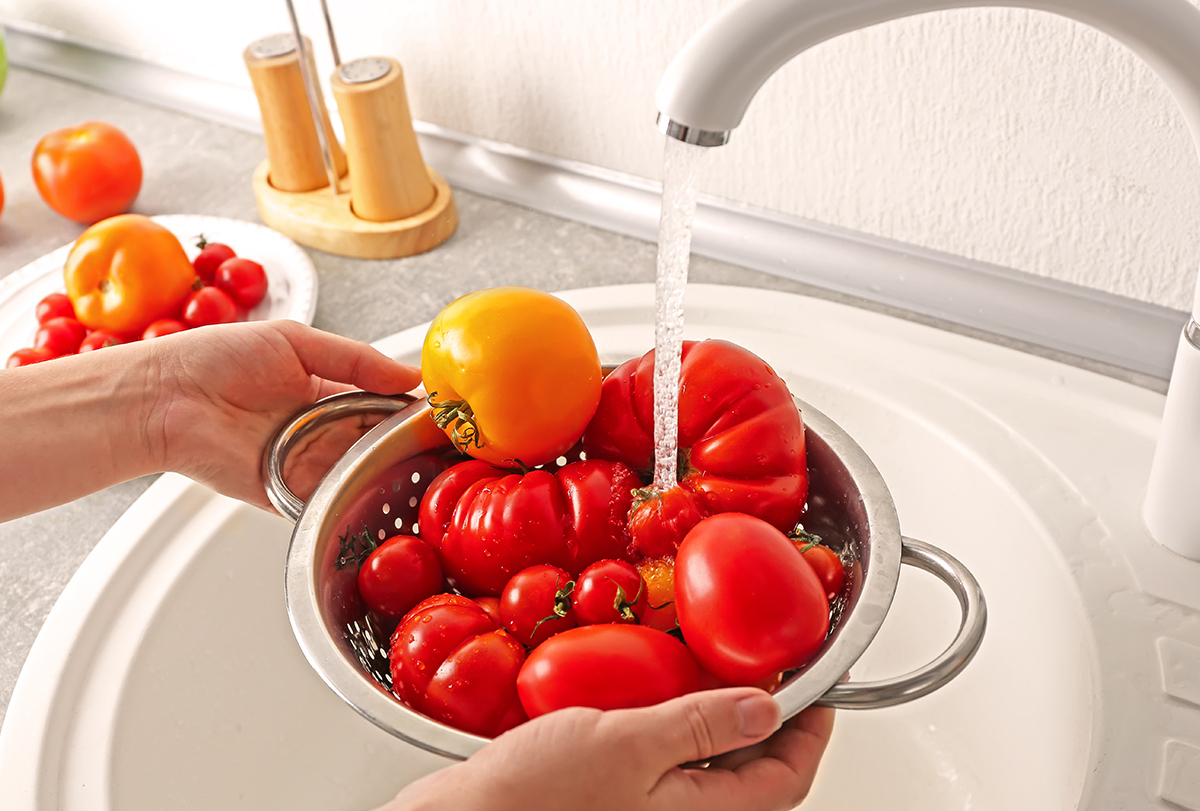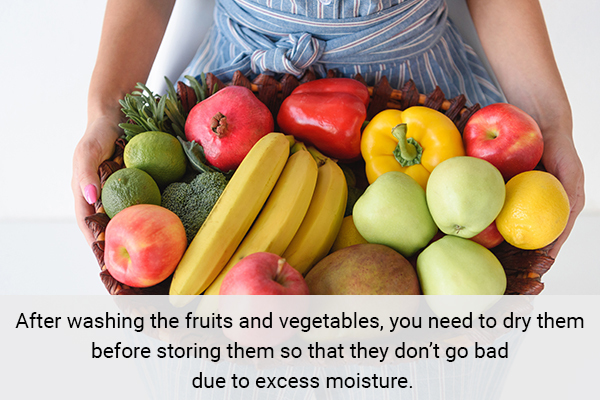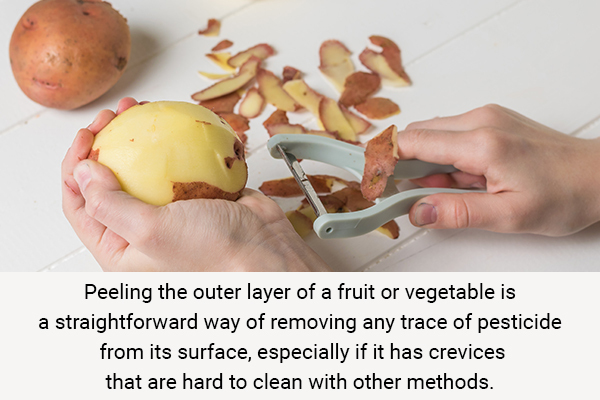In this article:
The use of pesticides in farming is common all over the world. These chemical compounds are sprayed over growing crops such as fruits and vegetables to protect them from rodents, insects, germs, and weeds, but traces of the pesticide stick to their surface even after harvesting.

In fact, many advocacy organizations recently found significant amounts of pesticide residue in fruits and vegetables that were randomly tested.
According to the USDA Pesticide Data Program (PDP), more than half of all the fruits and vegetables eaten in the USA are contaminated with substantial traces of pesticide and over 30% contain more than one pesticide. (1)
Not just that, animal products also contain pesticide residue because the fodder they feed on is usually treated with these chemicals.
Consuming these contaminated foods can leave you sick over time. As these chemicals accumulate inside the human body little by little, they can wreak havoc on your neurological and reproductive system, severely hamper your immunity, lead to birth defects, and increase your cancer risk.
Thus, consuming foods contaminated with even low doses of pesticides for an extensive period can be a slow way to die. (2)(3)
There is nothing you can do to control the amount of pesticides used on fruits and vegetables, but there are things you can do to get rid of their residue. This article will share some easy ways to get the job done.
Tips to Remove Pesticide Residue in Food
Here are some simple DIY techniques to minimize pesticide residue in foods: (4)
1. Washing with 2% salt water
A 2014 study suggested that the amount of pesticide retention in a crop depends on the physiochemical properties of both the chemical molecules and the crop.
In the case of fruits and vegetables, the pesticide residue largely remains on the surface, which is why thoroughly washing natural produce before consuming or cooking it is very important. This simple step should suffice to remove most of the contaminants.
To get the best results, wash the produce with a 2% saline solution (you can add a pinch of turmeric or sodium carbonate for better results), followed by a cold-water rinse. (5)
2. Drying and dehydration

After washing the fruits and vegetables, you need to dry them before storing them so that they don’t go bad due to excess moisture. (6) This also helps in eliminating any pesticide residue still present on the surface of the crop via evaporation.
There are different ways to do this wherein each method works differently on different pesticides. (5) For instance, it was found that keeping natural produce in sunlight or drying it with hot air can help remove about 20%–30% of pesticide residues. Meanwhile, industrial dehydration helped remove more than 80% of pesticide residue from apples.
You can also use a paper towel to soak the surface moisture from apples, strawberries, pears, guavas, and tomatoes, but you may have to scrub gently fruits and vegetables with a firm and hard exterior such as melons and root vegetables when drying them.
A salad spinner is the best way to dry green leafy vegetables such as lettuce.
3. Blanching
Soaking prewashed fruits and vegetables in boiled water or exposing them to steam for 15 seconds to 1 minute can help remove the pesticides still present on their surface.
This technique called blanching is quite effective in getting rid of any stubborn impurities or contaminants.
4. Peeling

Peeling the outer layer of a fruit or vegetable is a straightforward way of removing any trace of pesticide from its surface, especially if it has crevices that are hard to clean with other methods.
For this reason, cutting out the outermost layers of leafy vegetables such as cabbage and lettuce is a good move.
The pesticide residue inside animals usually gets absorbed in the skin and fat tissue. Thus, trimming the excess skin and fat from chicken, meat, and fish is recommended to minimize pesticide residue. (5)
5. Cooking
You can remove the pesticide residue accumulated in animal fat tissue by properly cooking raw meat, which includes pressure cooking, frying, and baking.
The same is the case with raw milk, which can be pasteurized by heating it. The heat destroys stubborn toxins and chemicals, making your food safe for consumption.
6. Growing a garden
You can also try setting up a kitchen garden or enrolling in a community garden to grow your own produce with minimal use of pesticides. This is the only way you can control the type and amount of pesticide used on the fruits and vegetables you plan on consuming.
If you are struggling with garden pests, opt for integrated pest management (IPM) services to get rid of them with the least possible risk of hazard.
If you cannot grow your own fruits and vegetables, get them from the local farmers’ market where you can ask the farmers about their pesticide use practices before making a purchase.
Avoid commercial grocery stores or supermarkets that offer no direct communication with the food producers.
How to Make a Homemade Cleaning Spray

You can make your own cleaning solution at home. Here are three options:
Method 1:
- Dissolve ½ teaspoon of salt in a large bowl of water.
- Soak the fruits and veggies in the saline solution for a few minutes
- Rinse the produce under fresh running water.
- Pat them dry with paper towels.
Method 2:
- Mix 1 teaspoon of white vinegar in a large bowl of water.
- Immerse the fruits and vegetables in this solution for 10 minutes.
- Thoroughly wash them under running water.
- Pat them dry with paper towels.
Method 3:
- Combine 1 tablespoon of lemon juice with 2 tablespoons of baking soda.
- Dissolve this mixture in a cup of water.
- Pour it into a spray bottle.
- Spray this solution on your fruits and vegetables.
- Wait for a few minutes before wiping it off with paper towels.
Final Word
Fruits, vegetables, and animal foods are replete with nutritional goodness that can do wonders for your health, but contamination with pesticides can keep you from reaping their full benefits.
These toxic chemicals can collect inside the body over time and give rise to adverse health outcomes. So, it is important that you take all the necessary steps to clean your raw food before consuming it.
- Was this article helpful?
- YES, THANKS!NOT REALLY


